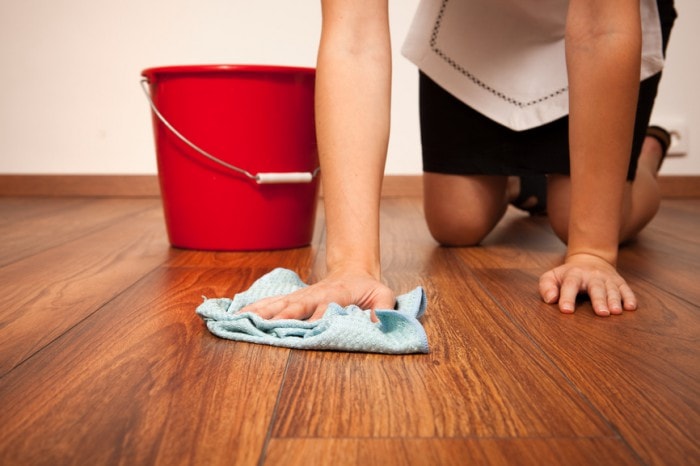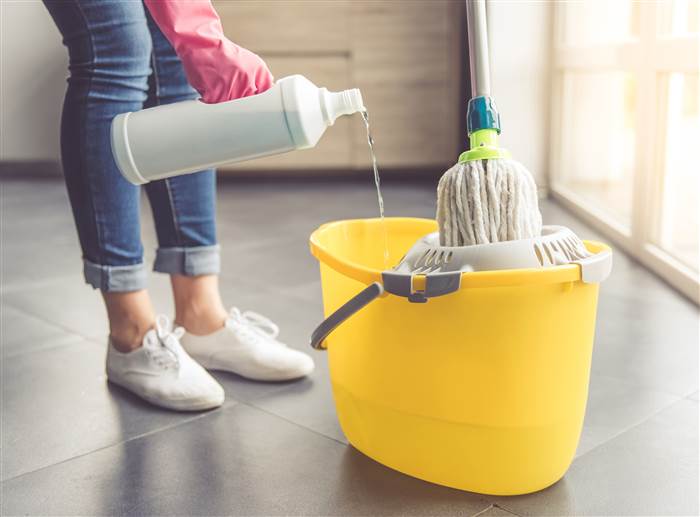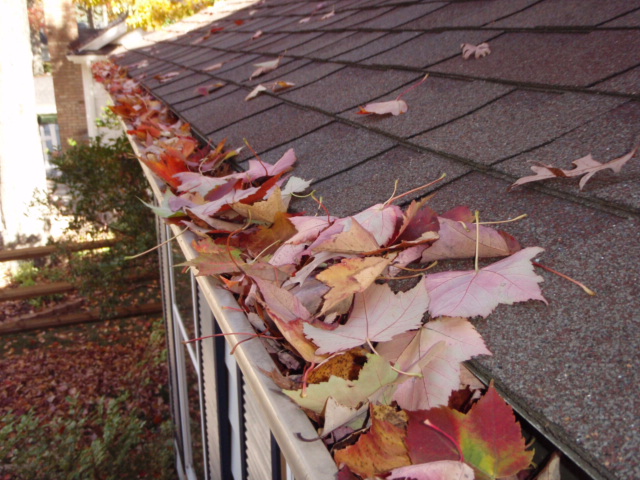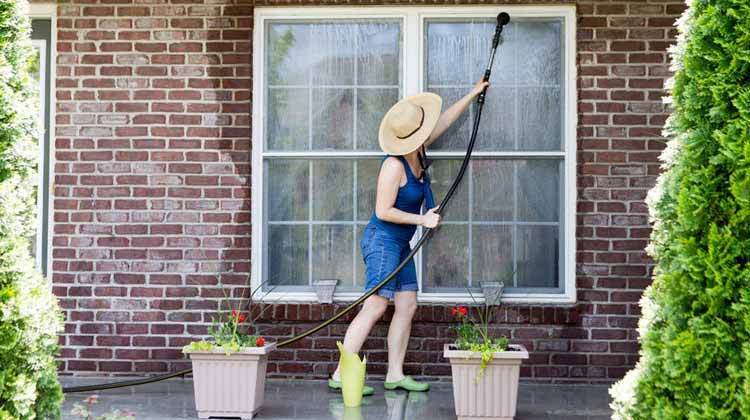Best Kitchen Mop for Different Types of Flooring

You should be cleaning different floors differently. Here’s how!

Photos By: Stock Images
As the engine of the home, kitchens more often than not become the place requiring that little extra TLC. With food and drink spillages, constant footprints of both human and pets alike, and just general dust and debris, kitchens are that room in the home that require a frequent go over with a mop.
As a room for cooking, it’s important to keep your kitchen clean and fresh. But, when it comes to choosing the best kitchen mop, it can be difficult to decipher which type of mop is best for your flooring. We’ll be discussing the best type of mop for every type of kitchen floor, so you can get the best out of your cleaning time.
Vinyl Flooring
While vinyl floor is stated to be 100% waterproof, when it comes to mopping your vinyl flooring you’ll still want to be careful how you approach it. Vinyl flooring doesn’t enjoy a lot of moisture, so overloading your floor with an excess of water is likely to cause damage over time. Due to vinyl being crafted with a fibreboard core, vinyl flooring can tend to hold on to excess water which in time can cause the flooring to warp, bubble and show damage.
When cleaning your vinyl floor using a mop, you’ll want to look for something with a microfibre material. Microfibre mops are handy at picking up and holding onto dust, cleaning your flooring with ease. By using a microfiber cloth, you can clean away dust, debris and spillages in a gentle manner, avoiding any scrapes, scuffs or an overload of moisture. Microfibre cloth mops can be used both wet and dry, depending on the severity of the dirty floor.
Always avoid using steam cleaner mops on a vinyl floor, as high heat and moisture can cause warping and damage.
Wooden Flooring
Before adding any moisture at all to your wooden floor, ensure the surface is protected with a sealant. Wooden floors with no protection are likely to become quickly damaged through the cleaning process or through regular wear and tear.
When mopping your wooden kitchen floor, the best type of mop to look for is a mop with a microfiber pad. Microfibre removes dust and debris from wood flooring quickly and efficiently, in a gentle manner. Leaving you with sparkling wood floors and no damage.

Stone Flooring
When it comes to stone flooring, cleaning may feel like it could get tricky due to the texture. Stone flooring is porous, so again, you want to avoid a lot of moisture on the surface as it’ll soak it right up. However, stone floors can take a bit more of a scrubbing than other types of flooring. So if you have some tricky stains, don’t be afraid to get in there as long as you have the correct tools.
We recommend investing in a microfiber scrubbing mop pad. Microfiber scrubbing mop pads give a bit more of an aggressive clean, without being abrasive. This allows you to scrub away spillages, sticky patches, dirt and debris efficiently, without breaking down the stone surface.
Avoid steam cleaning a stone surface with a steamer mop, as the flooring will soak in the excess water, taking a long period of time to dry. Excess water and damp is the biggest cause of mould within the home.
Tile Flooring
Tile flooring is a type of surface that can deal with a little bit more of an aggressive approach to cleaning. For tiled kitchen flooring, we’d recommend investing in a spin mop.
Spin mops come in a range of different materials, however, a great material to look for is microfiber. Spin mops are designed with a circular head that are great for reaching hard to reach areas that rectangular mops often miss. Their mop buckets have built-in spinning baskets that efficiently remove the water and dirt from the mops head, leaving it ready for the next use.
Avoid excess water when cleaning a tile floor, such as the use of a steam mop. An overload in moisture can seep through the grout of the tiles, causing them to lift over time.

Laminate Flooring
Laminate flooring is often confused with vinyl flooring, however, the two have some very notable differences. Vinyl flooring is said to be 100% waterproof – although we wouldn’t proceed to throw water at the surface, in case of damage. However, laminate flooring is not.
This means that cleaning laminate flooring requires a lot of care. Laminate is manufactured using layers of highly compressed wood fibres, meaning that it’s very porous and can easy be subject to warping, bubbling and bending.
When cleaning a laminate floor, we recommend using a microfibre mop or a chamois cloth as these are the most gentle. Avoid the use of cotton mops on laminate flooring. Cotton mops hold excess water which can often leave the floor very wet. Never steam clean a laminate floor.






